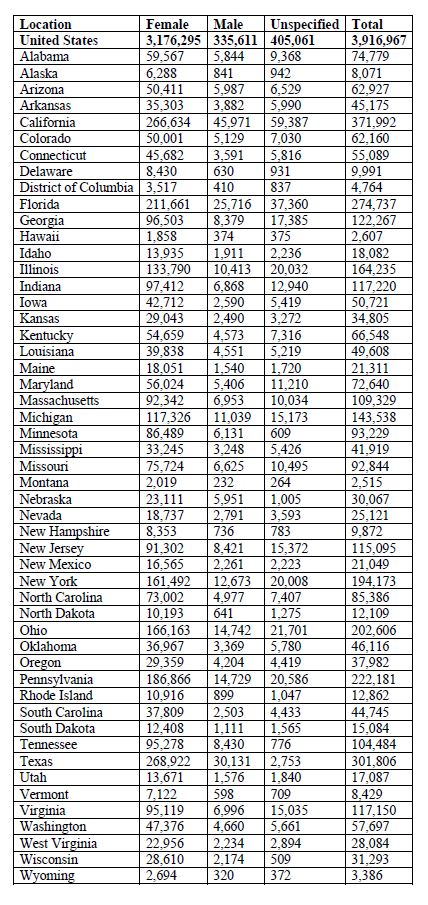Where the Male Nurses Are: State-by-state RN Numbers by Gender

Percentage of men in nursing is growing slowly; states show varying degrees of diversification
By Debra Wood, RN, contributor
A female-dominated profession, nursing has made strides in diversifying its ranks with men, but more needs to be done. Some states have made greater progress in employing male nurses than others, according to a new report from the Kaiser Family Foundation.
“The good news overall is the number of men in nursing is increasing,” said Bob Patterson, MSN, RN, president of the American Assembly for Men in Nursing and administrative director of the California Institute for Nursing and Healthcare in Oakland. He cited research from the Center for Interdisciplinary Health Workforce Studies at Vanderbilt University, which found a sharp increase in male nurses from 2010 to 2013, bringing the percentage up to 10.7 percent nationwide.
“We’re slowly doing better,” said Patrick R. Coonan, EdD, RN, NEA-BC, FACHE, dean and professor of the College of Nursing and Public Health at Adelphi University in Garden City, N.Y. He reports 13.5 percent men are registered in the program, up from less than 9 percent 10 years ago.
Why more men are choosing nursing
Patterson credits the economic downturn in 2008 with bringing more men into the profession, because the health care industry provided steady growth. Many men laid off from other jobs went back to school to become nurses. Retraining dollars were available in some states.
“Nursing provides an opportunity to come in with a similar income for the family and financial stability,” said William T. Lecher, DNP, MBA, RN, NE-BC, immediate past president of the American Assembly for Men in Nursing and senior clinical director of the specialty resource unit at Cincinnati Children’s Hospital Medical Center in Ohio.
Additionally, educational capacity has grown, providing more opportunities for men, Patterson explained. Second-degree programs have attracted significant numbers of men, often ranging from 15 to 30 percent, Lecher added.
“Nursing is still perceived as ‘women’s work,’” Lecher said. “They have to have a sense of security about that coming out of high school. Their parents have to be supportive. But in second-degree programs, these guys have been out in the workforce. … They are more mature, and it doesn’t have the same impacts.”
Patterson has found the negative stigma of being a male nurse has decreased, and males are more accepted. But Coonan said the stigma persists. And “we have not created enough critical mass of role models. You have to have enough to show it is cool, it’s OK.”
Edward J. Halloran, PhD, MPH, RN, chairman of the board of the American Assembly for Men in Nursing, said he believes women perpetuate the myths and close ranks to men. That may start during clinical rotations. Additionally, language and descriptions used in the profession--such as “caring science”--are often off-putting to men.
State numbers
Nebraska holds the distinction of being the state with the greatest percentage of male nurses, 20 percent. Iowa and North Dakota have the smallest percentage at 5 percent. Nationwide, the Kaiser Family Foundation report estimates males make up 9 percent of the nursing workforce.
Patterson doubted that some states are more attractive to male nurses, but he expects more are employed in urban settings, such as San Francisco, Los Angeles or New York.
Nursing schools in certain states may be more open to male applicants, or the states may have made gender diversity a priority, Lecher added.
Coonan thought some states with greater need of nurses might attract more men.
Pay rates also may factor into it, Halloran said. Hawaii has a high percentage of male nurses at 14 percent and California 12 percent. Halloran reported salaries for nurses in California are higher than in other states. Additionally, the staffing ratio laws in California have increased demand for nurses.
“California and Hawaii are two states that may attract more interest from men because they are unionized and pay well,” Halloran said.
Looking ahead
To attract even more men to the field, Patterson said, recruitment efforts have to begin early, in middle school, to educate young men about the opportunities for nurses.
Halloran suggested the nursing profession needs to address the stereotypes and language disincentives. “People don’t think stereotypes are harmful, but they are,” he said.
Coonan suggested attracting more men to the profession will lead to more men becoming nurses. He thinks when the percentages reach the 20–30 percent range, more men will enter nursing more quickly.
“It’s all about the numbers,” Coonan concluded. “We haven’t hit the tipping point. … Nursing is a great profession.”
Total Number of Professionally Active Nurses, by Gender

Get Job Alerts, by Specialty and State
TravelNursing.com makes it easy to keep up on jobs in your nursing specialty and state of choice. Just sign up to receive our free email alerts by text or email.
Source: The Kaiser Family Foundation State Health Facts. Data source: Special data request on State Licensing Information from Redi-Data Inc. March 2015.
© 2015. AMN Healthcare, Inc. All Rights Reserved.